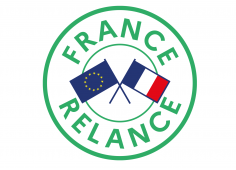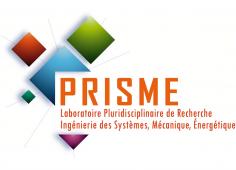EXploration Poids-lourd à l'Hydrogène
| This project is part of the territorial unit of the R&D Auvergne Rhône Alpes recovery plan | |
| Duration ► | 24 months |
| Start ► | January 2022 |
Context
On July 14, 2021, the European Commission adopted a set of voluntary and ambitious proposals in order to adapt the Union's policy, particularly in the field of climate, energy, agriculture and transport, in order to reduce its greenhouse gas emissions by 55% by 2030 compared to 1990 emissions and to achieve climate neutrality by 2050. This roadmap called "FIT for 55" envisages reducing average greenhouse gas emissions of private vehicles and light commercial vehicles by 55% from 2030 and 100% from 2035 compared to 2021 levels. Thus only electric vehicles or vehicles using hydrogen can be marketed. To assume the supply, the distribution network will be reinforced in particular thanks to charging stations of at least 300kW every 60 km and Hydrogen refueling station and every 150 km in each urban node by 2030.
Green hydrogen is therefore one of the solutions adopted to meet these ambitious objectives and can be converted into electricity using a fuel cell or into mechanical energy if the hydrogen is used in an internal combustion engine. Thus in a context of transport, industry and energy production (generator), the optimal valorization of hydrogen must be privileged while controlling the cost of investment and operation of the Energy converter (battery with fuel or internal combustion engine).
Thus, taking into account performance, investment (CAPEX) and operating cost (OPEX), the internal combustion engine running on hydrogen is an elegant solution to meet future environmental challenges.
Objectives
The ExPH2 project (Hydrogen Heavyweight EXploration) aims to urgently propose, i.e. within 24 months, solutions for converting diesel-type internal combustion engines into controlled ignition engines and thus save existing means of production in France at Volvo Powertrain. The skills acquired during a first Ademe PL MH8 project made it possible to demonstrate that the retrofit of diesel engines could be transformed, with a few adaptations, into a hydrogen spark ignition engine. During this project, our ambition is to optimize this transformation by studying more precisely the geometry of the combustion chambers and the injection strategies.
Partners
The ExPH2 project is a continuation of the Ademe PL MH8 project and will make it possible to accelerate the work carried out in order to optimize the technological choices and the implementation of a hydrogen solution in the Volvo group.
Work plan
In order to ensure the success of this conversion, the PRISME laboratory will be fully associated with this project since the single-cylinder engine from the Ademe PL MH8 project of PRISME will be reused. Skills in terms of hydrogen combustion, motorization, experimental but also digital injection diagnostics will be put to use during this project.
Numerical and experimental tasks will be carried out within the PRISME laboratory at the University of Orléans. They will be based in particular on the computing center of the Center Val de Loire region and on a specially developed test cell which does not exist on the Volvo Powertrain industrial site.
The complementarity of the two parties will make it possible to respond effectively to industrial and scientific challenges, to quickly develop skills and to shine in their respective fields of activity.
Expected results
To achieve these objectives, the project will adopt a digital approach aiming at:
- Develop and validate combustion chamber designs associated with injection strategies in order to equip a wide range of industrial internal combustion engines: engine for heavy goods vehicles, generator types industrial engines, agricultural machinery or construction machinery.
- Perform 3D modeling of injection, mixture preparation and combustion depending on operating conditions (injection pressure, engine load, rpm, etc.) in order to predict performance but also NOx emissions.
- Realize combustion chamber designs and injection strategies to optimize the preparation of the hydrogen-air mixture in order to reduce NOx emissions and the appearance of knocking.
This numerical approach will be completed by an experimental approach carried out on a single-cylinder engine. The design of the combustion chambers will be tested experimentally and will validate the reduction in NOx emissions and the appearance of knocking.
Valorisation
The study is fully in line with the objectives of supporting the transition to low-carbon technologies. It also aims to maintain employment on the national territory thanks to a diversification of the product offer of Volvo Powertrain.
By deploying technology allowing the rational use of hydrogen, the ExPH2 project will meet the objective of significantly reducing CO2 emissions from road transport and industry.
Contact : Fabrice FOUCHER ⇒ fabrice.foucher@univ-orleans.fr



